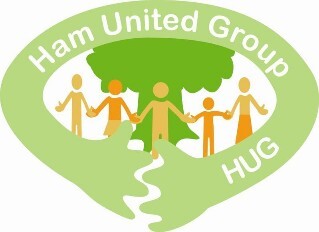Butterflies are some of our most familiar and attractive insects. There are fifty-nine breeding species of butterfly in the UK, and we are lucky enough to have just under half of these on Ham Lands.
The Ham Lands species list has been growing over the last few years with the Green Hairstreak butterfly added in early June 2023.
The following photographs show a selection of the more common species you might spot during a walk on the Lands.
(Left to right) Speckled Wood, Peacock, Comma, Holly Blue, and Orange Tip
(Left to right) Meadow Brown, Marbled White, Gatekeeper, Ringlet and Common Blue
You can find butterflies in any part of Ham Lands. Certain species tend to prefer woodland rides and glades (e.g., Speckled Wood, Comma, Ringlet) whereas others occur mostly in the grassland areas (e.g., Meadow Brown, Marbled White, Common Blue). Ideally warm, sunny days with no or only moderate winds are best for seeing butterflies on the wing. Spring species such as Orange Tip and Brimstone usually appear in April whilst the grassland species peak in numbers in early July. A few butterfly species are found later in the year and even into early November if weather conditions are favourable.
Life Cycle
There are four distinct stages to the life cycle of butterfly: egg, caterpillar, chrysalis, and an adult butterfly. Butterflies will feed on nectar for energy but only live for a few weeks. A few butterfly species can hibernate overwinter re-emerging on warmer sunny days in late winter and early spring.
Counting butterflies
In 2023 the UK organisation Butterfly Conservation reported that 80% of our butterfly species have declined in numbers since the mid-1970s. Read the report The State of the UK's Butterflies 2022 Report at https://butterfly-conservation.org/state-of-uk-butterflies-2022.
This is a real cause for concern as butterflies are key indicators of the state of the environment as well as important plant pollinators and contributors to food chains. There is a continuing need for long-term monitoring studies both nationally and locally so that we can learn more about the factors contributing to the decline and to better understand how habitat management can help reverse the downward trend.
The volunteer conservation work on Ham Lands aims to improve the habitat for our butterflies (and other insects as well as maintaining plant diversity).
Survey data from Ham Lands contributes to the UK Butterfly Monitoring Scheme (https://ukbms.org/about) through counts made along two routes (transects) walked on a weekly basis from April to September. Ham Lands South has been monitored since 2018 and Ham Lands North since 2021.
So far, the years 2019 and 2021 have been the best in terms of numbers on Ham Lands South although data from 10 or more years will be needed to identify any longer-term local trends. The Ham Lands data makes an important contribution to understanding trends and influencing factors at the national level.
More information about butterflies can be found at butterfly-conservation.org.


